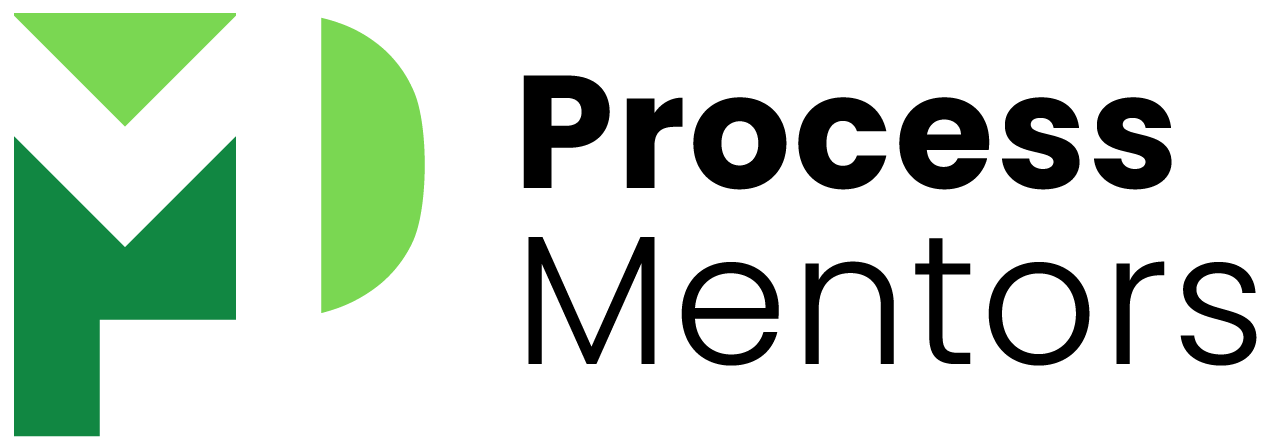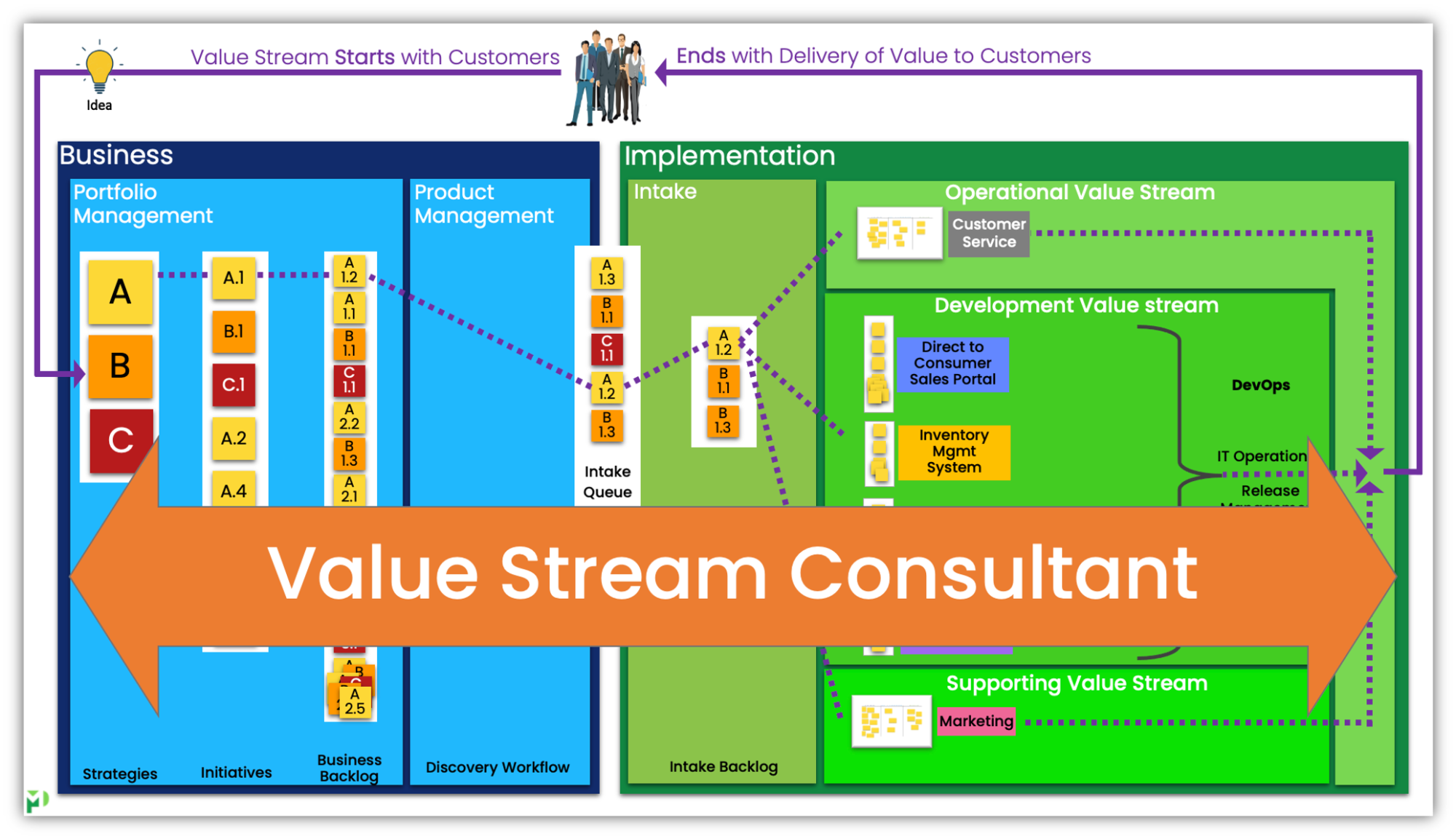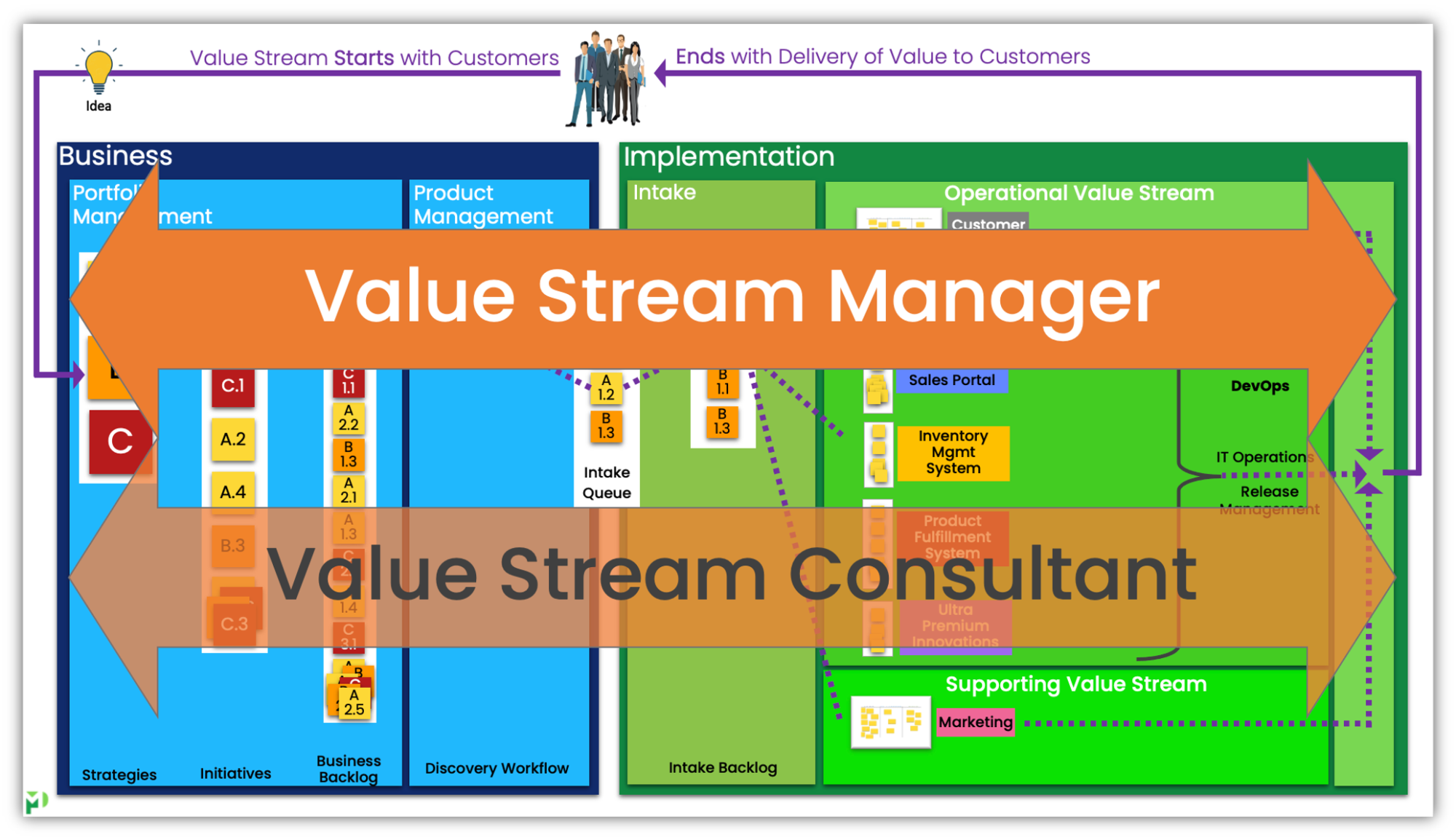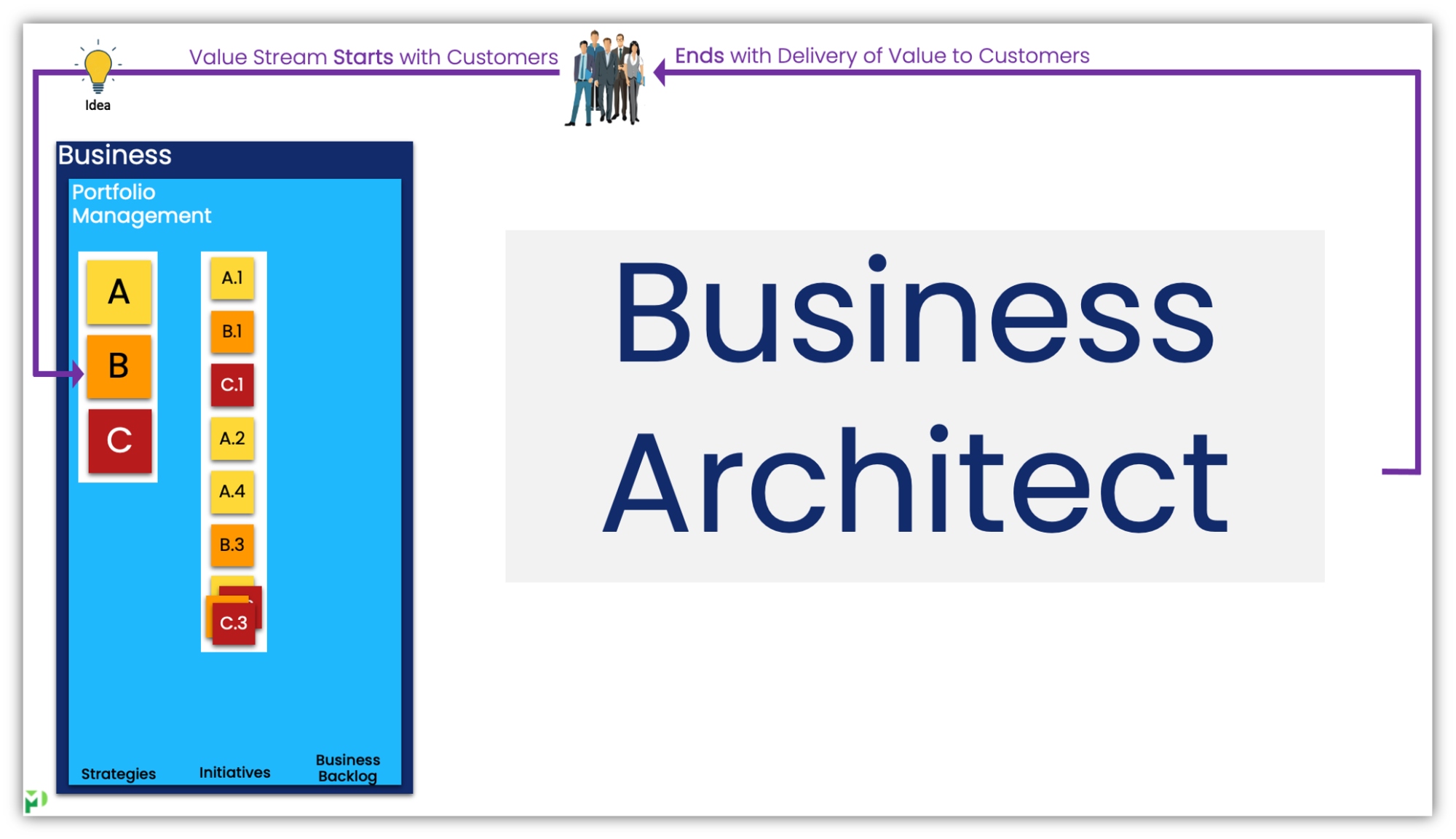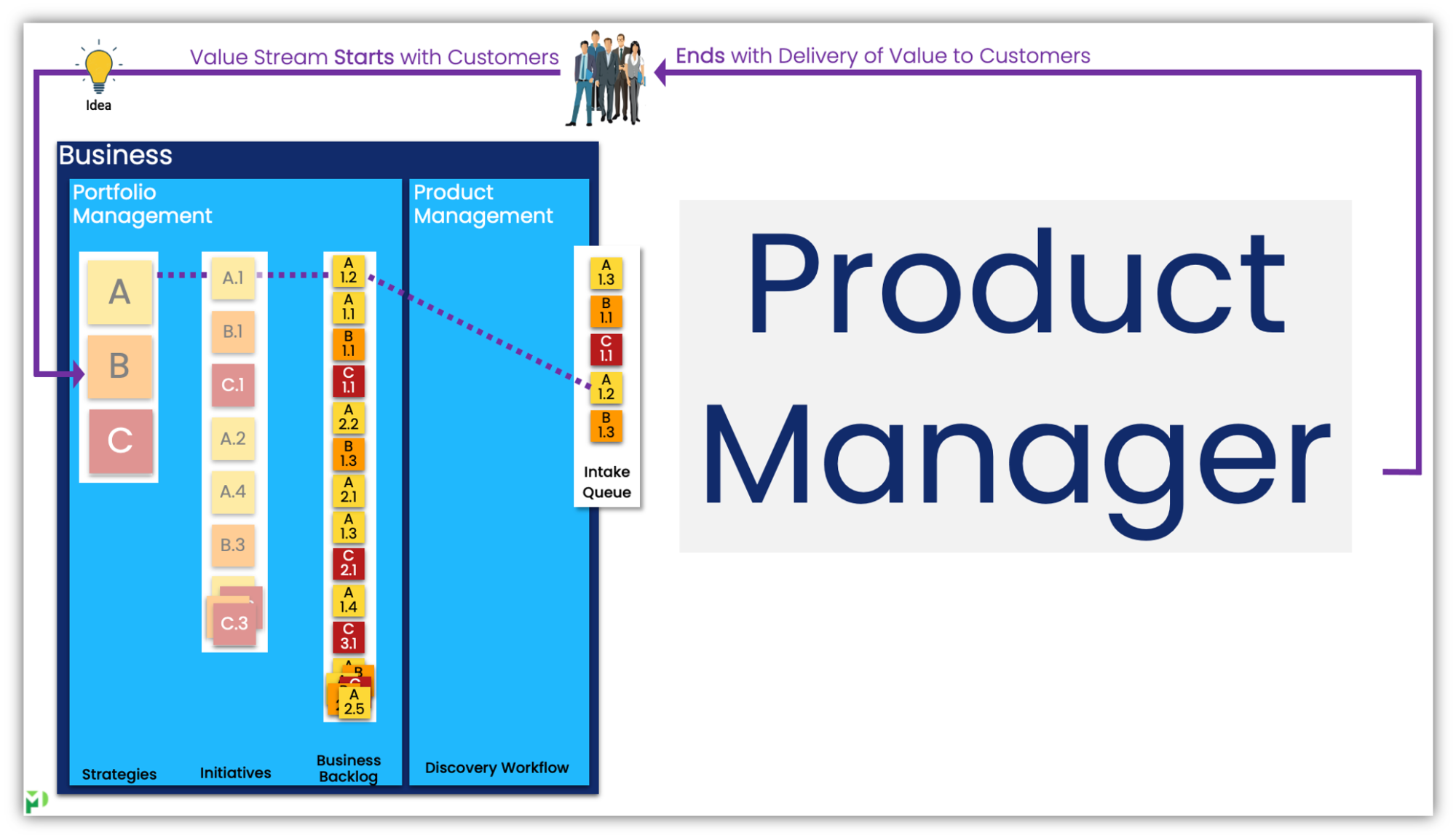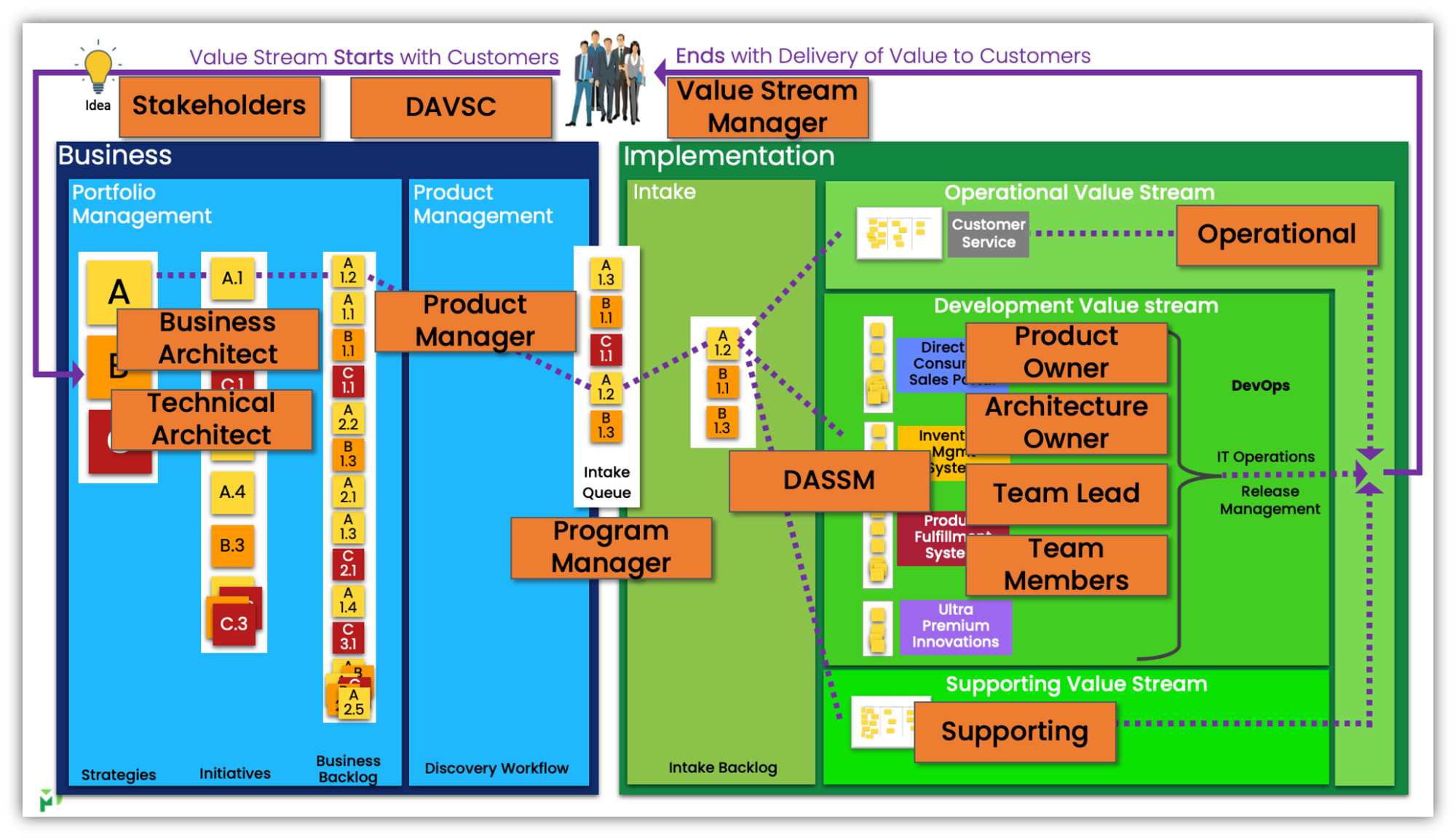
This article is part 2 of 2 and focuses on a brief overview of two new roles to consider and the evolution of responsibilities of two typical existing roles.
The first new role is the Disciplined Agile Value Stream Consultant, or “DAVSC.” Released as both a role and certification, this role is currently unique within DA. Figure 1 depicts the span of participation and value-adding activities for the DAVSC, end-to-end coverage of a value stream, and expertise for creating a plan to improve it.
Figure 1: Span of the Disciplined Agile Value Stream Consultant – “DAVSC”
The DAVSC is what I like to refer to as the crown jewel in the DA certifications. Embodied in this role is a significant portion of the essence of the former Certified Disciplined Agile Coach (CDAC). The person that achieves this certification and delivers value to organizations in this role understands the theory of DA’s Value Stream Management and the bodies of knowledge that influence it (Lean, Flow, Theory of Constraints, Tameflow, etc.).
A few of the high-impact attributes to this role are:
- Acts as the Chief Transformation Agent.
- Supports the organization to create an improvement backlog and plan of action.
- Educates and encourages support for the improvement plan.
- Possess expert-level knowledge and experience in organizational transformation practices.
- Collaborates, trains, and mentors the Value Stream Manager (figure 2).
I feel that adding the role of the DAVSC brings clarity and distinction of the purpose and value proposition an organization should receive when utilizing it. The person in this role should be a very well-rounded and experienced agile coach.
So why is another role beneficial?
Varying names are plenty for senior-level agile coaches: Enterprise Agile Coach, Agile Transformation Coach, or Super-Duper Super Senior Agile Coach. Well, you get the point. How many of the more senior agile coaches know value stream management? How many know how to identify improvement opportunities in a value stream, populate an improvement backlog, and develop a plan of action to begin improving? Sure, some, but by no way the vast majority. That just is not where agile transformations usually focus. That is why a new role, at least in my opinion, is justified at this juncture.
Figure 2: Span of the Value Stream Manager
Another new role in the Value Steam layer of DA is the Value Stream Manager. In most scenarios, filled by an employee of the organization. Value Stream Managers are in it for the long term, adding value by attending to the entire value stream, from start to finish. They focus on how to improve the flow of value through the stream.
Value Stream Managers are responsible for:
- The overall health of their value stream and how to continuously improve the flow within it.
- Identifying the constraint in the stream, reasons about it, and make decisions around it.
- Support a good collection of Flow Metrics.
- They are enterprise aware, supporting NOT just their value stream, but the value network their stream is within.
An inherent problem in many organizations is the reporting/managing structure. A typical approach is a hierarchal structure with levels of management to the top. The problem is that value delivery flows differently, and often no one is managing it. Hence the value proposition of this role, the one that does manage the flow of value and improvements in that flow.
In comparison to this role, the DAVSC is a consulting role (internal or external). They support the Value Stream Manager and everyone in the value stream. Once the transformation for the value stream is sustainable, they can bring the value of their role to the next value stream, and so on. Organizations can have 10s, 100s, or even 1000s of value streams based on their size and offerings.
Figure 3: The Business Architect
The Business Architect role is not new. This role has been around for a long time, and many organizations have them in place. Figure 3 depicts the primary area of this role in the Idealized Value Stream. Although, please note this is the area of concentration, a Business Architect’s activities will span a good portion of the value stream.
Value Stream Managers are responsible for:
- Focusing on developing and maintaining the business capabilities of the organization.
- Aligning capabilities to strategies and new work to the organization’s investment strategy.
- Identifying initiatives to support achieving desired outcomes of the strategic objectives.
- Attends to impacts, dependencies, and risks of new work across other value streams and the value network.
Figure 4: The Product Manager
Similar to the role of Business Architect, the Product Manager role is not new. However, there are many new responsibilities that this role takes on within value stream management. Figure 4 depicts the focus area for the Product Manager. This role within the Idealized Value Stream is responsible for:
- Decomposing initiatives into Minimum Business Increments (MBIs).
- Identifying innovations via Minimum Viable Products (MVPs).
- Forming the Business Backlog with MBIs and MVPs.
- Balancing all classes of service: MBI, MVP, paying down technical debt, compliance/regulatory, defects, etc.
- Sequences the Business Backlog and refreshes the intake queue.
Many responsibilities for the Product Management group to support within the Idealized Value Stream, the DAVSC and Value Stream Manager support the evolution of the role and support needed.
Figure 5: Expanded Roles in the Idealized Value Stream
There are many roles that complete value-adding activities in the Idealized Value Stream, figure 5 expands on them. The graphic is not a definitive list. The roles and their placement are for awareness and thought-provoking to changes that may be beneficial.
I placed Stakeholders, DAVSC, and Vales Stream Manager towards the top as they participate from start to end. The placement of the others is based on the primary area of focus. Please remember that any of these roles will have upstream and downstream participation, some of which may be significant.
For additional information, I did a LinkedIn Live stream on this topic:
ATDA Miniseries Ep 7 of 12: Roles in Value Stream Management
We help implement lean and agile methodologies to streamline processes in a context-sensitive manner.
Quick Links
Latest Posts
All Things Value Delivery Management – Value Flow Factor 1: Small Items
Is the size of work the minimum scope to provide value a customer can consume? In most cases, the answer is no. However, whether it is a project, business case, charter, work package, epic, etc., we can almost always identify a minimum business increment. Relentless...
Project Manager to Value Delivery Manager
Here we have a common problem. The “agile team” comprises a product owner, team coach, and team members. Far too often, I hear something like, “there are no project managers in agile.” Agile teams are empowered to make decisions and determine how to get the work done....
